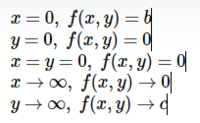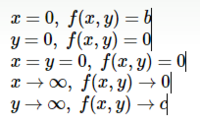AntoineCure
New member
- Joined
- May 25, 2021
- Messages
- 5
Hello everyone,
I don't have the mathematical skills so I'm posting here, I would like to know the solutions of this partial differential equation :

Where a is a real positive constant.
I know that there are an infinite number of solutions but I would like to know if there is a solution that satisfies to the following conditions :

b and c are also real and positive constants.
Thank you very much !
I don't have the mathematical skills so I'm posting here, I would like to know the solutions of this partial differential equation :

Where a is a real positive constant.
I know that there are an infinite number of solutions but I would like to know if there is a solution that satisfies to the following conditions :

b and c are also real and positive constants.
Thank you very much !


